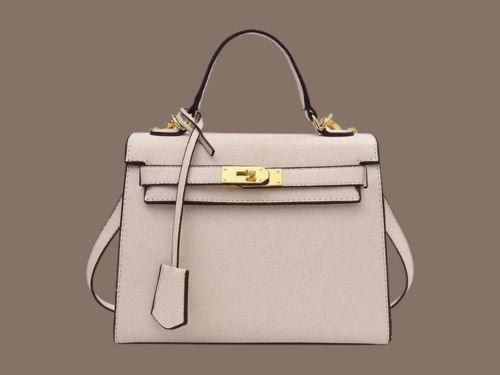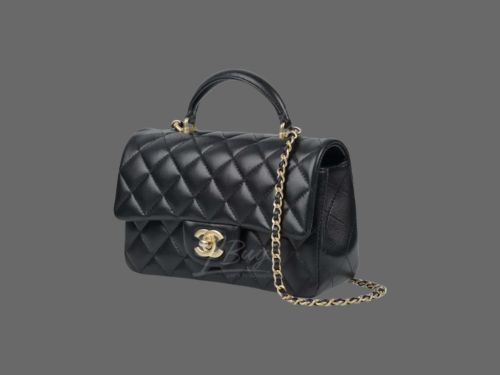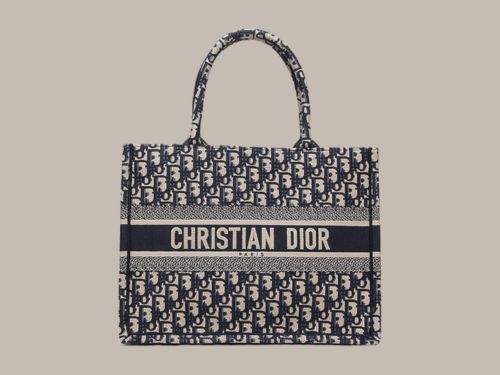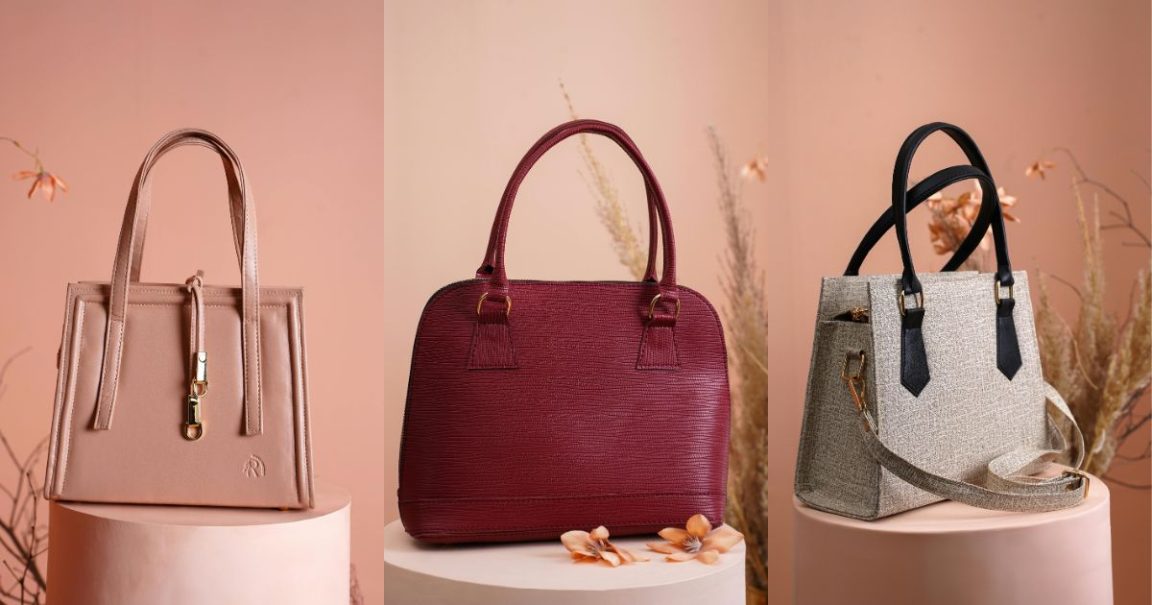Fashion is cyclical, and few accessories capture the elegance and charm of mid-century style like the top-handle bag. Revered for its structured form, polished silhouette, and timeless versatility, this bag style evokes the refined femininity of the 1950s while seamlessly adapting to modern wardrobes. Beyond mere nostalgia, top-handle bags have solidified their status as icons of fashion history, seamlessly blending practicality with sophistication.
The Origins of the Top-Handle Bag
The top-handle bag, as we know it, emerged prominently in the post-war era of the 1950s, a time when fashion reflected optimism, femininity, and a desire for refined elegance. Women of this era were redefining domestic and public life, and fashion mirrored this transition. Unlike the utilitarian bags of the war years, top-handle bags were small, structured, and deliberately elegant. They were designed not just as accessories but as statements of style.
The silhouette was practical, often rectangular or trapezoidal, with a single handle on top for hand-carrying. These bags were perfect for the poised, upright postures fashionable women cultivated in the ’50s. Icons like Audrey Hepburn, Grace Kelly, and Jacqueline Kennedy immortalized this accessory on screen and in daily life, pairing their ensembles with handbags that complemented tailored dresses, gloves, and polished shoes.
Key Features of Classic ’50s Top-Handle Bags
The allure of 1950s top-handle bags lies in their careful balance of elegance, practicality, and refined craftsmanship. Every element, from silhouette to hardware, was designed to communicate sophistication while remaining functional for daily life. Here’s a closer look at what made these bags timeless:
Structured Silhouette
Unlike the soft, slouchy, or oversized bags that became popular in later decades, top-handle bags of the ’50s were rigid and sculpted. Designers often reinforced them with internal frames or stiffened leather to maintain their pristine shape. This architectural structure wasn’t just aesthetic; it created a poised, ladylike appearance that naturally complemented the polished postures fashionable women were encouraged to maintain. The structured form also made it easier to access contents without the bag collapsing, ensuring practicality alongside elegance.
Modest Size
Top-handle bags from this era were intentionally designed to be compact. They were designed to carry essentials such as a wallet, gloves, a compact, a handkerchief, and perhaps a small lipstick case; nothing more. This modest sizing emphasized refinement over utility, reflecting the ‘less is more’ approach to style. The petite dimensions made the bags light, easy to carry, and ideally suited to the tailored silhouettes and full skirts of the period, reinforcing an overall impression of sophistication and restraint.
Single Handle Design
The signature feature of these bags was the single handle positioned on top. This design allowed for graceful carrying either by hand or in the crook of the arm, creating an elegant, almost ceremonial way of holding one’s bag. The single handle was not merely decorative; it dictated the wearer’s posture and movement, subtly encouraging elegance in everyday gestures. In a time when manners and appearances were highly curated, this functional design became a statement of style and refinement.
Materials and Finishes
Leather was the dominant material, prized for its durability, smooth texture, and ability to take on a polished finish. Designers experimented with various textures, including glossy, patent leather for a formal look, pebbled or grained leather for a subtle texture, and occasionally exotic skins like crocodile, python, or ostrich in high-fashion pieces.
Hardware was carefully selected to complement the design, featuring solid clasps, metallic frames, and minimal embellishments that highlighted the bag’s craftsmanship. These finishes emphasized quality and durability, enabling the bags to withstand both trends and the passage of time.
Colors and Patterns
The color palette of ’50s top-handle bags reflected the decade’s preference for understated sophistication. Neutral shades such as black, beige, tan, ivory, and soft pastels dominated, offering versatility and easy coordination with the era’s classic wardrobe staples. However, designers occasionally experimented with bolder colors to make a statement, such as deep reds, navy blues, or muted metallics. Subtle textures and patterns, such as geometric embossing or delicate floral motifs, were sometimes added to provide visual interest while maintaining an overall refined aesthetic. These choices highlighted the era’s dedication to understated elegance, combining beauty with restrained opulence.
Iconic Designers and Bags of the Era
The 1950s were a golden era for handbags, particularly the top-handle style, as designers sought to blend elegance, functionality, and modern sophistication. Several legendary fashion houses played pivotal roles in defining this accessory, creating bags that not only complemented wardrobes but also became enduring symbols of status and taste.
Hermès Kelly Bag
Originally crafted in the 1930s as the Sac à Dépêches, this bag gained iconic status in the 1950s thanks to Grace Kelly, who famously used it to conceal her pregnancy from the paparazzi, prompting its renaming as the Kelly Bag. Characterized by its trapezoidal silhouette, clean lines, and polished leather, the Kelly exudes understated sophistication. Its top-handle design, combined with a sleek flap closure and sturdy clasp, made it both practical and refined. Beyond its structural elegance, the Kelly Bag symbolized prestige, exclusivity, and impeccable taste, appealing to women who wanted accessories that matched the era’s aspirational lifestyle.

Chanel Classic Top-Handle Bags
Coco Chanel, already celebrated for revolutionizing women’s fashion with her minimalist yet luxurious aesthetic, extended her design philosophy to structured top-handle bags in the 1950s. These bags blended her signature elegance with functionality, featuring durable leather, subtle quilting, and refined hardware. Chanel’s top-handle designs were perfect for the modern woman who valued both style and practicality, complementing everything from tailored suits to elegant dresses. These handbags conveyed a dual message of understated luxury and confident femininity, making them a staple in the wardrobes of women seeking both fashion and social status.

Dior Lady Bag
Christian Dior‘s top-handle bags in the 1950s were closely tied to his New Look, which emphasized cinched waists, full skirts, and an overall sense of polished glamour. The Dior Lady Bag mirrored this aesthetic with structured lines, soft yet defined edges, and an elegant handle for hand-carrying. Often crafted in fine leather and occasionally adorned with delicate hardware or minimal embellishments, the Lady Bag was designed to complete Dior’s signature silhouette. It was more than an accessory—it was an extension of the couture outfit, reinforcing the idea that every detail of a woman’s ensemble contributed to her overall image of refinement.

Cultural Significance
These top-handle bags weren’t merely functional items; they were status symbols. In post-war society, where women were increasingly stepping into public and professional spaces, carrying a top-handle bag communicated taste, sophistication, and social awareness. The combination of luxurious materials, meticulous craftsmanship, and iconic design meant that owning one of these bags was a statement, signaling membership in a circle of women who valued elegance, discernment, and modern femininity.
Revival in Modern Fashion
Fast-forward to the 21st century, and top-handle bags have made a triumphant comeback. Luxury brands, alongside contemporary designers, reimagine this classic silhouette with updated materials, sizes, and versatility. Modern iterations include crossbody options, detachable handles, and sleek, minimalist designs that align with today’s lifestyle while retaining a vintage aura.
High-street brands also embrace this resurgence, offering more accessible versions that evoke ’50s charm without the high price tags. Social media, influencer culture, and fashion editors champion these bags, cementing their status as both retro-inspired and contemporary must-haves.
Styling Tips: Channeling ’50s Elegance Today
- Pair with tailored outfits like blazers, pencil skirts, or cropped trousers.
- Mix retro flair with modern staples such as denim or sneakers.
- Carry by hand or in the crook of the arm for classic charm.
- Choose neutral tones for versatility, or bold hues as statement pieces.
- Accessorize with delicate jewelry to keep the focus on the bag.
Materials, Craftsmanship, and Investment Value
One of the reasons top-handle bags endure is their superior craftsmanship. The ’50s originals were hand-stitched with attention to detail, often using vegetable-tanned or high-quality leathers. Modern reproductions respect this legacy, and collectors typically seek vintage pieces for both their nostalgic value and potential investment value. Investing in a top-handle bag can be a financially savvy choice. Iconic pieces, especially from renowned brands like Hermès, Chanel, and Dior, appreciate in value over time, partly due to their limited availability and enduring demand. Beyond financial value, these bags retain cultural and fashion significance, making them timeless wardrobe staples.
Why the Top-Handle Bag Endures
The appeal of top-handle bags lies in their marriage of form and function, nostalgia and modernity, elegance and versatility. Unlike trend-driven fast fashion pieces, they embody a style statement that transcends decades. Carrying a top-handle bag Today evokes not only aesthetic pleasure but also a connection to fashion history, a tangible link to the grace and poise of women in the 1950s. Moreover, the resurgence of vintage and retro fashion amplifies their relevance. In an era where individuality and timeless sophistication are highly valued, the top-handle bag offers an effortless way to communicate style, intelligence, and historical awareness.
Timeless Elegance of the Top-Handle Bag
From the streets of Paris and New York in the 1950s to Instagram feeds Today, top-handle bags remain icons of enduring elegance. Their structured design, refined craftsmanship, and timeless charm make them more than a mere accessory. They are a bridge between eras, a statement of taste, and a practical companion for the modern woman.
Embracing a top-handle bag is more than a fashion choice; it’s a nod to a time when elegance was paramount and style was an art. Whether investing in a vintage original, splurging on a luxury reinterpretation, or choosing a contemporary high-street version, the top-handle bag continues to capture the imagination, proving that some styles are truly timeless.



